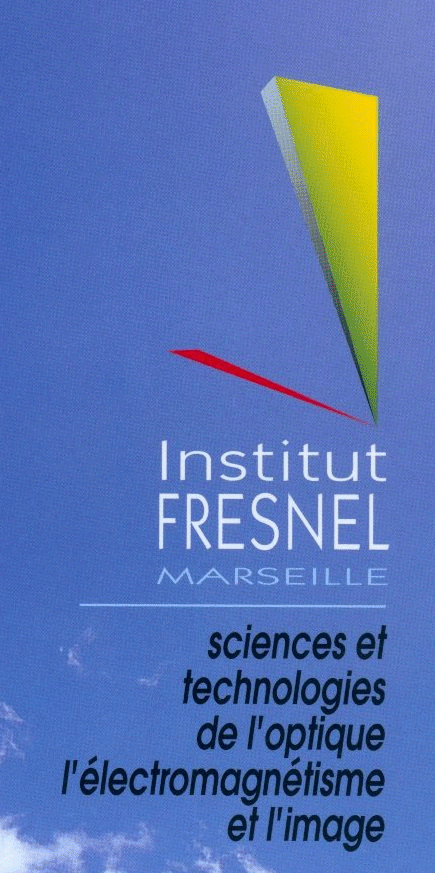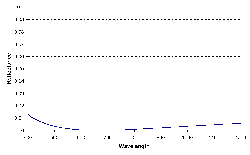Theoretical Tools
Rigorous calculations with
Maxwell equations resolution
Mono/bi-periodic dielectric and metallic structure designs
Calculation of the magnitude of diffracted waves
Evaluation of the field intensity inside the structure
Design of 1D and 2D non polarized anti-reflection surfaces
Design of low-pass and narrowband-pass filters with 1D and 2D structures.
Subwavelength-Structured Surfaces
for Optical Applications
Diffractive optics reshape wavefronts, performing such tasks as focusing, collimating, and beamsplitting. Subwavelength-Structured-Surfaces, a less conventional type of diffractive optic, can replace, or even improve optical functions achieved by thin-film coatings, supplying antireflection, polarizing, or filtering effects. Such surfaces can be used for applications in which thin-film approaches are not viable.
-
Mathematical approach
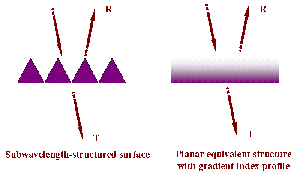 In
first approximation, the effective refractive index synthesized by
a SWS surface can be quantified by effective-medium theories (EMTs)
[ref].
In
first approximation, the effective refractive index synthesized by
a SWS surface can be quantified by effective-medium theories (EMTs)
[ref].
While mathematically simple and accurate enough to generate good first order designs, EMTs are approximations. The final design must be determined by a rigorous vector diffraction theory. Several methods including coupled waves analysis [], integral [] or differential [] methods provide accurate results, but the differential method is the one which is the most appropriate however complicated the profile structure can be. Shortly, it consists in solving a set of differential coupled equations resulting from Maxwell equations (eq.) .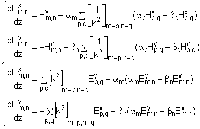
Outgoing waves conditions and continuous tangential fields enable to calculate the electromagnetic fields, and the efficiency of diffracted waves by the surface where stands for the Fourier coefficient of the refractive index profile of the surface at an altitude z.
Our rigorous numerical tool is able to simulate accurately the spectral and angular response of mono and bi-periodic SWS of various profiles.
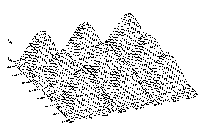
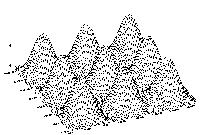
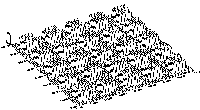
2.1 Antireflection surfaces
Subwavelength-structured surfaces can be used as antireflection - structured surfaces (ARs) for both polarized and unpolarized light. When properly designed, these structures can operated over large spectral bandwidths and large field of view [ref]. The basic structural approach is the following:
an ideal refractive index profile is determined either by analytical methods (a quarter-wave layer of index (nins)1/2 for instance) or by Synthesis methods (Fourier analysis, []). In a second step, the geometry of the SWS is approximately designed by EMTs. This starting design is finally adjusted with a rigorous software.
Exemples d'AR
2.2 Polarizing
effects
Sub-wavelength surfacing can impart a birefregent surface to any
isotropic material that can be etched, replicated, or molded.
The grating structure is fabricated with different filling factors
along the x and y axes. Incident light polarized along the x direction
sees and effective index of nx while light polarized along the
y direction sees and effective index of ny. The surface behaves
as a negative uniaxial crystal with birefringence (Dn=nx-ny)
an order of magnitude above that found in conventional materials
such as quartz, calcite and even cadmium sulfide.
2.3 Lowpass
filters By designing an antireflection coating for lower wavelengths,
one can achieved a low-pass dichroic filter with only 2-4 thin film
coatings.
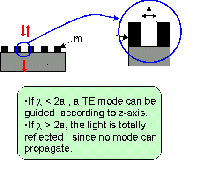 Under
TE illumination, holes inside an horizontal metallic grid play the
role of a vertical metallic waveguide with a cut-off wavelength depending
on the distance between two metallic plates.
Under
TE illumination, holes inside an horizontal metallic grid play the
role of a vertical metallic waveguide with a cut-off wavelength depending
on the distance between two metallic plates.
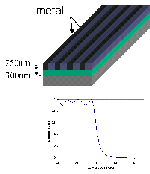
2.4 Narrowband filters
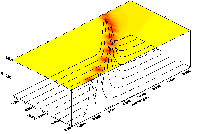 Subwavelength-structured
surfaces can act as narrowband filters in which the reflection
spectra of the surface change rapidly as a function of incident
wavelength or incident angle. The basic design consists of a grating
sandwiched between a substrate and a cover layer that also fills
the grooves of the grating (fig). When the effective index of
refraction of the grating region is greater than that of the substrate,
a waveguide is created. When the filter is designed properly,
incident light passes into this waveguide region and propagates
as a leaky mode.
Subwavelength-structured
surfaces can act as narrowband filters in which the reflection
spectra of the surface change rapidly as a function of incident
wavelength or incident angle. The basic design consists of a grating
sandwiched between a substrate and a cover layer that also fills
the grooves of the grating (fig). When the effective index of
refraction of the grating region is greater than that of the substrate,
a waveguide is created. When the filter is designed properly,
incident light passes into this waveguide region and propagates
as a leaky mode. 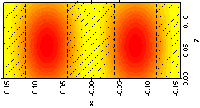 The
grating structure of the region selectively couples light at a
narrow band of wavelengths or incident angles into the waveguide.
This light propagates a very short distance (few hundreds of microns),
undergoes scatter, and couples with the forward or backward propagating
zero order light. This highly sensitive coupling condition can
produce the resonance grating effect on the reflected radiation
spectrum.
The
grating structure of the region selectively couples light at a
narrow band of wavelengths or incident angles into the waveguide.
This light propagates a very short distance (few hundreds of microns),
undergoes scatter, and couples with the forward or backward propagating
zero order light. This highly sensitive coupling condition can
produce the resonance grating effect on the reflected radiation
spectrum.
